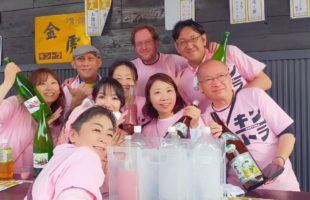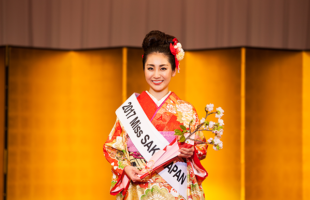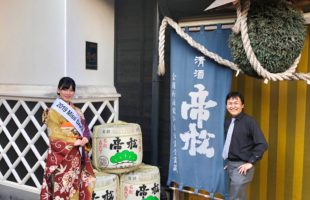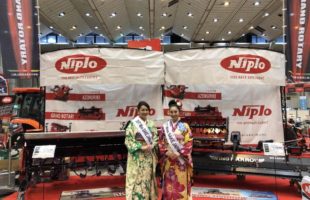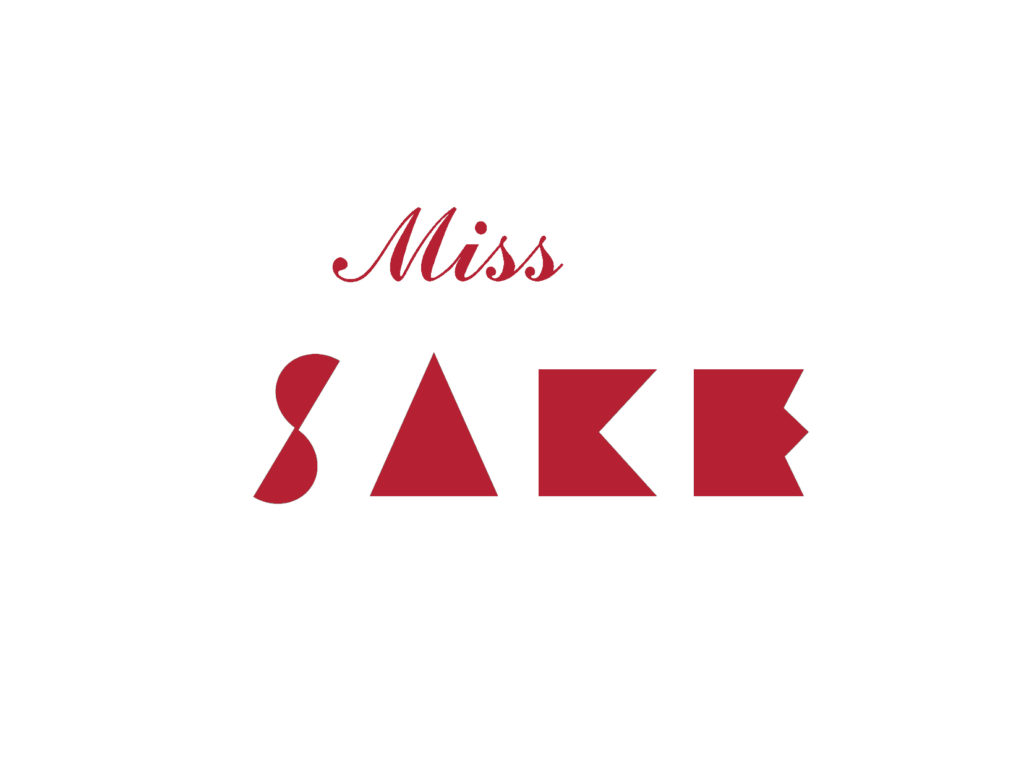今回のテーマは、『日本酒の歴史』。
日本における日本酒造りは縄文時代後期に稲作を行っていることから、約2,000年の歴史があると考えられています。
最も古い日本酒は「口噛み酒」と呼ばれており、口の中で唾液に含まれる酵素が米を糖化させ、それを吐き出して野生酵母でアルコール発酵をさせるものでした。現代では、様々な機械を用い、一度に多くの酒を醸すことができます。
当時から現在にかけて、酒造りの技術や効率が格段に上がったことが分かります。日本酒造りは時代の変化とともに何度も変化を遂げ、大きく発展してきました。
今回は、その日本酒が変化してきた過程を、英語で表現する練習をさせて頂きました。
以下に、本日学んだ日本酒に関する一般知識の日英対訳を記述させて頂きます。
英会話レッスンテーマ『日本酒の歴史(The History of SAKE)』日英対訳
Unit 2. 日本酒の歴史
日本酒の歴史はおよそ日本に稲作が伝わった時期から始まります。つまり、日本酒の歴史は日本の米文化と共に発達してきたと言えるでしょう。一般的に、日本に稲作が伝わったとされているのは弥生時代で、今から約2000年前に遡ります。この時代では、「口噛み」という最も原始的な醸造方法で日本酒が造られていました。加熱した米を口の中でよく噛み、唾液に含まれる酵素で糖化し、野生酵母によって発酵を進めます。
奈良時代になると、律令制度が確立され、造酒司という役所が設けられ、朝廷のための酒の醸造体制が整えられ、酒造技術が一層進んでいきました。
平安時代に入ると、日本酒はハレの日には欠かせないものとなりました。当時の政治は宗教儀礼的要素が強く、ほとんどの日本酒が貴族など上流階級の方々のためのものであったため、庶民の口に入ることはなかなかありませんでした。また、この時代に「僧坊酒」と呼ばれる寺院で醸造される日本酒が発達しました。
15世紀頃にあたる室町時代では、朝廷の酒造組織にかわって寺院・神社が日本酒を造るようになり、京都で小規模の造り酒屋が数多く誕生しました。また、年間を通じて日本酒が造られるようになりました。
今日の酒造りの原型は、18世紀頃の江戸時代に確立されました。1年の中で、雑菌の繁殖を抑えやすい冬が最も酒造りに適していること、保存性を高めるための火入れ法、そして香味を整えるためのアルコール添加の技術もこの時代に発達したとされています。
明治時代になると、酒税が国税の中で高い割合を占めるようになり、日本酒は政府の歳入における重要な財源となりました。この時代に初めて瓶詰めされた日本酒が発売されました。また、国立の醸造試験場が開設され、科学理論が酒の醸造に不可欠な要素として広く認識されるようになります。
日本には、正月・花見のような季節の節目を祝う伝統行事がたくさんあります。古代より、それらの行事において日本酒は欠かせない存在でしたが、今日では、「ハレ」の日以外でも日本酒を楽しめるようになりました。
【英訳】Unit 2. The history of sake
The history of sake has continued since rice farming started in Japan, so it can be said that the history of sake has developed along with the history of rice culture in Japan. Generally, it is said that rice farming started in Yayoi period, and it was about 2,000 years ago. In this period, sake was brewed by the most primitive method called Kuchikami. People chew heated rice well, and convert it into sugar using enzymes contained in saliva, and then promote fermentation with wild yeast.
In Nara period, (AD 710–794), a system of centralized government was established. In this era, the organization called sake-no Tsukasa(sake brewery office) was established, and they formed a brewing system for the Imperial Court. As a result, brewing technique developed further more.
In Heian period, (AD 794-1180), sake was indispensable during celebrative occasions, and has strong character like religious rituals. During the time, sake was reserved for the aristocracy.Therefore, common people hardly had it at that time. In this period, sake was brewed in large temples and it was called Soboshu.
During the Muromachi period around 15thcentury, hundreds of small-scale sake shops were born in Kyoto and sake came to be brewed throughout the year.
The brewing technique used today was established in Edo period around 18thcentury. Winter is the best season to brew sake because of the absence of unwanted bacteria. Pasteurization for better preservative quality and distilled alcohol in order to adjust the flavor were also developed in this era.
In Meiji era, the percentage of liquor tax occupied high ratio among all the taxes, so sake has been important resource for revenue for the government since this era. During this period, bottled sake was released for the first time, and National Brewing Laboratory was established. Then, a chemical process came to be widely recognized as factor that is indispensable for production of the liquor.
In Japan, there are many events to celebrate especially the seasonal turning points like Hanami, which is a celebration during the cherry blossom season. From ancient times, sake has been a part and parcel of these affairs. Nowadays, we can enjoy sake during any social gatherings.
英語の動詞が含む意味をしっかりと捉えることで伝わりやすくなる
今回のレッスンでの一番の気づきは、「動詞が含む意味をしっかりと捉える」ということです。
日本語を英訳する際、直訳なあまり英語が不自然になった経験はありませんか?
私は今回、「口噛み酒」の説明文を書かせて頂きました。
「加熱した米を口の中でよく噛み、唾液に含まれる酵素で糖化し、野生酵母によって発酵を進めます。」という文を、私は初め、”People chew heated rice in the mouth well, and convert it into sugar using enzymes contained in saliva, and then promote fermentation with wild yeast.”と表現していました。
私は一語一句漏れがないよう英訳させて頂いたのですが、この場合、“in the mouth”は余分な単語になります。
なぜならば、”chew”という動詞には「奥歯で噛む」という意味がもともと含まれているため、in the mouth という表現がなくても、相手には「口の中で物を噛む」という行為が伝わるからです。
今回のレッスンで、余分な単語や必要以上に説明していた点をインストラクターの方に指摘して頂き、スッキリとした、まとまりのある英訳のコツを掴むことができました。
日本酒は奥が深く、また専門用語においても似ている単語や数が多いため、意味と単語を混同してしまうケースも少なくはありません。
単語や文章をシンプルに、まとまりをよくすることで、初めて日本酒についてのお話をお聞きになる方にも理解して頂けるよう、分かりやすい表現を工夫し、徹底して参りたいと存じます。
次回のレッスンのテーマは、『日本酒の造り方』です。また多くのことを吸収できますよう、一生懸命励んでまいります。
Gaba様、この度は素晴らしいレッスンを誠にありがとうございました。
*他のレッスン様子は以下よりご覧いただけます。
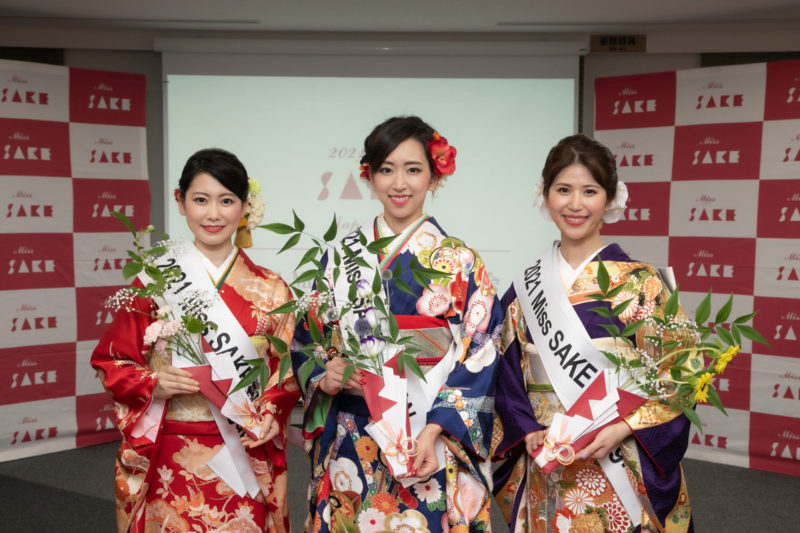
英会話Gaba × Miss SAKE Miss SAKE(ミス日本酒)にご協力を頂いている企業様の中に、以前よりご協力いただいている「英会話のGaba」様がございます。 過去には英語を学びながら、ミス日本酒と日本酒を愉しむ「日本酒女子会 in English」も開催させていただいております...
英会話Gaba × Miss SAKE Miss SAKE(ミス日本酒)にご協力を頂いている企業様の中に、以前よりご協力いただいている「英会話のGaba」様がございます。 過去には英語を学びながら、ミス日本酒と日本酒を愉しむ「日本酒女子会 in English」も開催させていただいております...
![]()
The theme for this time was “The History of SAKE”
[for English Speakers]
The theme for this time was “The History of SAKE”. I learned how to explain the process that sake has changed so far in English.
I descrived the history of sake that I learned today below.
Unit 2. The History of SAKE
The history of sake has continued since rice farming started in Japan, so it can be said that the history of sake has developed along with the history of rice culture in Japan. Generally, it is said that rice farming started in Yayoi period, and it was about 2,000 years ago. In this period, sake was brewed by the most primitive method called Kuchikami. People chew heated rice well, and convert it into sugar using enzymes contained in saliva, and then promote fermentation with wild yeast.
In Nara period, (AD 710–794), a system of centralized government was established. In this era, the organization called sake-no Tsukasa(sake brewery office) was established, and they formed a brewing system for the Imperial Court. As a result, brewing technique developed further more.
In Heian period, (AD 794-1180), sake was indispensable during celebrative occasions, and has strong character like religious rituals. During the time, sake was reserved for the aristocracy.Therefore, common people hardly had it at that time. In this period, sake was brewed in large temples and it was called Soboshu.
During the Muromachi period around 15thcentury, hundreds of small-scale sake shops were born in Kyoto and sake came to be brewed throughout the year.
The brewing technique used today was established in Edo period around 18thcentury. Winter is the best season to brew sake because of the absence of unwanted bacteria. Pasteurization for better preservative quality and distilled alcohol in order to adjust the flavor were also developed in this era.
In Meiji era, the percentage of liquor tax occupied high ratio among all the taxes, so sake has been important resource for revenue for the government since this era. During this period, bottled sake was released for the first time, and National Brewing Laboratory was established. Then, a chemical process came to be widely recognized as factor that is indispensable for production of the liquor.
In Japan, there are many events to celebrate especially the seasonal turning points like Hanami, which is a celebration during the cherry blossom season. From ancient times, sake has been a part and parcel of these affairs. Nowadays, we can enjoy sake during any social gatherings.
Sake is very profound, and its technical terms are so complicated because there are many words, and some of them have similar spell. I will try to make sentences simple and clear, so that the beginners can understand what I talk about.
The theme for the next lesson is “How to Brew SAKE”.
I will work hard to absorb many things in the next lesson.
GABA, thank you very much for this wonderful lesson.

英会話Gaba × Miss SAKE Miss SAKE(ミス日本酒)にご協力を頂いている企業様の中に、以前よりご協力いただいている「英会話のGaba」様がございます。 過去には英語を学びながら、ミス日本酒と日本酒を愉しむ「日本酒女子会 in English」も開催させていただいております...
英会話Gaba × Miss SAKE Miss SAKE(ミス日本酒)にご協力を頂いている企業様の中に、以前よりご協力いただいている「英会話のGaba」様がございます。 過去には英語を学びながら、ミス日本酒と日本酒を愉しむ「日本酒女子会 in English」も開催させていただいております...




